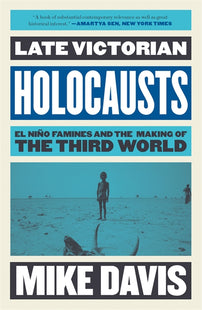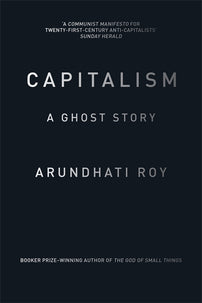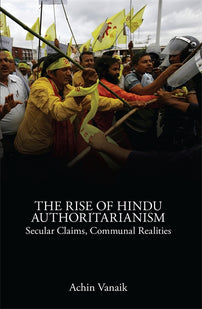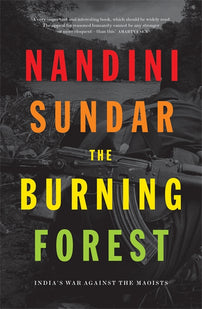Hunger, or The Social Logic of Climate Breakdown
Aranyo Aarjan writes about the situation in West Bengal following Cyclone Amphan

When the climate crisis is referred to as anthropogenic, I tend to think of two related but separate phenomena. On the one hand, there is the increase in greenhouse gas emissions since the Industrial Revolution which has contributed to a rise in global mean temperatures, leading to more extreme weather around the world. On the other hand, there are the man-made structures —physical, administrative, societal — which conspire to turn ‘weather events’ into catastrophes.
Cyclone Amphan, the most powerful storm to hit the Bay of Bengal in the 21st century, made landfall on 20 May. Videos from the ground showed apocalyptic scenes – winds of up to 185km per hour battering settlements of makeshift homes into oblivion, a terrifying five-metre storm surge, rivers overflowing their embankments. By the time it had made its way from the southern districts of West Bengal, including the capital Kolkata, through to northern Bangladesh and lost its intensity, it had left a trail of devastation in its path. Whole villages had been flattened, entire districts flooded, countless trees uprooted, many crushing cars and buses, power lines being toppled, leaving millions without electricity, as well as an incalculable number of deaths to wildlife and livestock.
The Bengal Delta is home to nearly a quarter of a billion people. A vast area of low-lying land on the Eastern side of the Indian Subcontinent, where the great Ganges, Brahmaputra and Meghna rivers and their thousands of tributaries flow into the Bay of Bengal, it is no stranger to powerful storms, yet this time things were markedly worse.
The world was two months into the COVID-19 lockdown when Amphan hit. In India this had caused a particularly acute crisis among the country’s 200 million migrant labourers and informal-sector workers – some of the most economically precarious people in the world, perpetually on the brink of destitution. When the central government announced a total lockdown on 24 March without plans to compensate workers for lost wages or provide them with food rations, millions found themselves stranded with no work and nowhere to stay, and had to make their way back to their home villages by foot. Some collapsed and died on the roadside. West Bengalis who survived the long trudge did so only to find themselves on Amphan’s frontline.
This triple threat of cyclone, coronavirus and a pre-existing socioeconomic crisis exposed deep fault-lines in the already fragile micro-economy of Bengal, not least in relation to the question of food security.
I
As with severe storms and floods, Bengal has a long-standing and intimate relationship with hunger and famine. While most people think of the famine of 1943, this was merely the last of numerous devastating famines during the period of British rule in India, many of which affected Bengal most adversely.
The first of these, in 1770, not long after the Battle of Plassey, resulted in the deaths of around 10 million people, around a third of the population of Bengal. It was partially the result of a directive by the British to stockpile up to six months’ worth of rice for their troops – in response to fears of shortage after crop failure due to a bad monsoon – carried out through martial appropriation from often impoverished peasants. The East India Company, having acquired revenue collecting rights from the Mughal court in Delhi, maintained, and even raised, tax rates as profound hunger descended upon the region.
As Vinita Damodaran notes, prior to British rule, the local economy of Bengal had developed many coping mechanisms to withstand crop failures. It was the erosion of this traditional way of life, with the advent of industrialisation and colonial rule, which turned what was essentially a local problem of scarcity into wholesale disaster. The area previously grew a variety of crops such as wheat, barley millets and poppy, both for subsistence as well as to safeguard against dependency on a single crop.
When the British arrived, they saw a vast region of fertile alluvial soil with a great capacity to generate surplus agricultural produce, leading to a change to monocultures of rice, as well as cash crops like indigo which have no nutritional value. Areas of Bihar and Bengal had artificial irrigation systems to reduce the impact of a shortage of rainfall, but these fell into disuse and disrepair under the British, as the local zamindars (landlords and revenue collectors) began shirking their responsibilities for their upkeep.
In Poverty and Famines (1981), Amartya Sen wrote that ‘starvation is the characteristic of some people not having enough to eat. It is not the characteristic of there being not enough to eat.’ Famines happen when an entire nexus of relationships he terms ‘entitlements’ (such as the ability to purchase, grow, or exchange one’s labour for food) finds itself in a configuration wherein large numbers of people are no longer able to procure food. These conditions manifested themselves time and time again over the course of the next 127 years, resulting in no less than twenty-five officially recorded famines in India.
As the British made further incursions into the countryside and forests of Bengal, they rapidly increased the commodification of land and natural resources, wreaking havoc on the traditional way of life and critical sources of food security, particularly for the tribal people who had previously resisted the worst effects of famine. This culminated in the famine of 1896–97, the worst since 1770, during which time the Bengal Famine Code was published as a guide for colonial administrators to identify signs of imminent famine. It included protocols such as regular reports on grain conditions, market prices and public health.
All such indications and protocols were entirely ignored in the 1940s, however, when British rule in India, particularly in Bengal, ended as it began – with a devastating famine which took the lives of between 2 and 3 million people. Janam Mukherjee states in Hungry Bengal (2015) that the prevalent narrative among Indian nationalist historians of the Famine of 1943 being entirely the fault of the British is too simplistic, and that it was the result of far more complex structures also involving the actions of wealthy Indians. While this is indeed the case, there can also be no doubt that decisions taken by the Churchill War Cabinet in response to the advance of Japanese forces played a major contributing role.
There was a combination of the relocation and storage of grains to be used for troops fighting in World War Two; a policy of denial, or scorched earth, whereby the British made vast tracts of agricultural land unusable in case the Japanese were to break their lines and enter India; and panic stockpiling, which made the price of rice shoot up drastically. Thus, when millions of the rural poor began flooding into the streets of Kolkata in late 1942, they were dying of starvation not due to a lack of availability of food so much as their own lack of ability to acquire it. This was compounded by the indifference not just of the British, displaying their Malthusian contempt towards the local population, but also the Indian capitalists who were making record profits in war industries, nationalist leaders more interested in their own political fortunes than the fate of the poor, as well as upper caste and economically secure Bengalis who saw the poor only from the distance of a profound class disparity.
II
And so, as we return to the present situation in Bengal, in the midst of COVID and the aftermath of the cyclone, prospects for food security look uncertain once again. ‘A survey was conducted by six non-governmental bodies between 28 April and 2 May to gauge the impact of the COVID lockdown on workers, mostly in rural India,’ Kasturi Basu tells me. Basu is an independent filmmaker and community organiser with Humans of Patuli, one of many activist groups which have emerged in order to provide relief to vulnerable people during lockdown.
The survey covered 5,000 families in 47 districts spread over 12 states in India. The results showed that 50 per cent of the families had reduced the number of daily meals, 68 per cent had cut down on food consumption, 84 per cent had fallen dependent on public distribution of rations, and 12 per cent depended on food distribution by volunteers and charity-based initiatives.
Encroaching seawater from the Amphan storm surge has also left great tracts of arable land salinised and therefore unusable for agriculture for several years to come. Additionally, India’s GDP has taken a tremendous hit of 23 per cent, and the entire country is facing its worst unemployment crisis since the 1970s. In communities like those in the Sundarbans – the world’s largest mangrove forest situated on the Bangladesh/West Bengal border, which in the decade since 2009’s Cyclone Aila has seen a great out-migration of working age people, particularly to South India, in search of gainful employment – the crunch is sure to be felt more severely than in most places.
To make matters worse, the state elections in West Bengal are due next year, and Narendra Modi’s far-right BJP have been making a concerted effort to come to power there for some time. Should a Hindu nationalist government which has shown a flagrant disregard for people’s lives be in charge of the state of West Bengal, which has a sizeable impoverished Muslim population and shares a long border with the Muslim-majority Bangladesh, at a time when up to 18 million people will potentially be made into refugees by rising sea levels alone, the possible results are almost too bleak to consider.
The worst outcomes of climate change will not arise from extreme weather events themselves, but rather from how capitalist societies fail to deal with them, and instead make them worse. When the Green Revolution came to India in the 1960s, at first in Northern India, and then later to the East, one of its express goals was the prevention of future famines. In some respects, the introduction of high-yielding variety seeds and a public distribution system of rations for the rural poor was successful, resulting in a sharp increase in food production by the 70s, which in fact outpaced population growth.
However, the reality remains that malnutrition is endemic throughout India, particularly in West Bengal. This is partially due to the fact that the Green Revolution prioritised the caloric intake of food over other nutrition, leading many people to subsist on a rice-only diet, one which has very little nutritional value. It is also due to the fact that even today, after all these years, many of the rural agricultural poor in Bengal have not been able to break out of the cycles of debt which have kept their lives perpetually balanced precariously on the edge of subsistence and hunger.
As with the industrialisation of India during British rule, similarly with the Green Revolution and later India’s market liberalisation, the changing economy and ecology of modernity has touched the population of Bengal with great unevenness.
‘Famine in the modern world often result when a structural order, already dependent on keeping a significant segment of its population perpetually on the verge of starvation, is confronted with a sudden shock such as war, natural disaster or economic crisis’, Janam Mukherjee tells me. ‘In that sense, one can’t say that famine ever really “ends” until the structures of disempowerment out of which mass starvation emerge end – because shocks and crises WILL come. Nowhere is that a more important lesson than in Bengal.’
Accurate data is difficult to ascertain in such a place, due to its sprawling landscape and the lack of infrastructure in the countryside, however present signs do not look at all hopeful for those living on the brink of destitution. We have countless history books from which to know the signs of an oncoming famine, but the real question is, when one does arise again, will anyone bother to take note before it’s too late?
Aranyo Aarjan is a London-based writer and core organiser with Global Justice Rebellion, a climate justice activist collective.
[book-strip index="1" style="display"]



